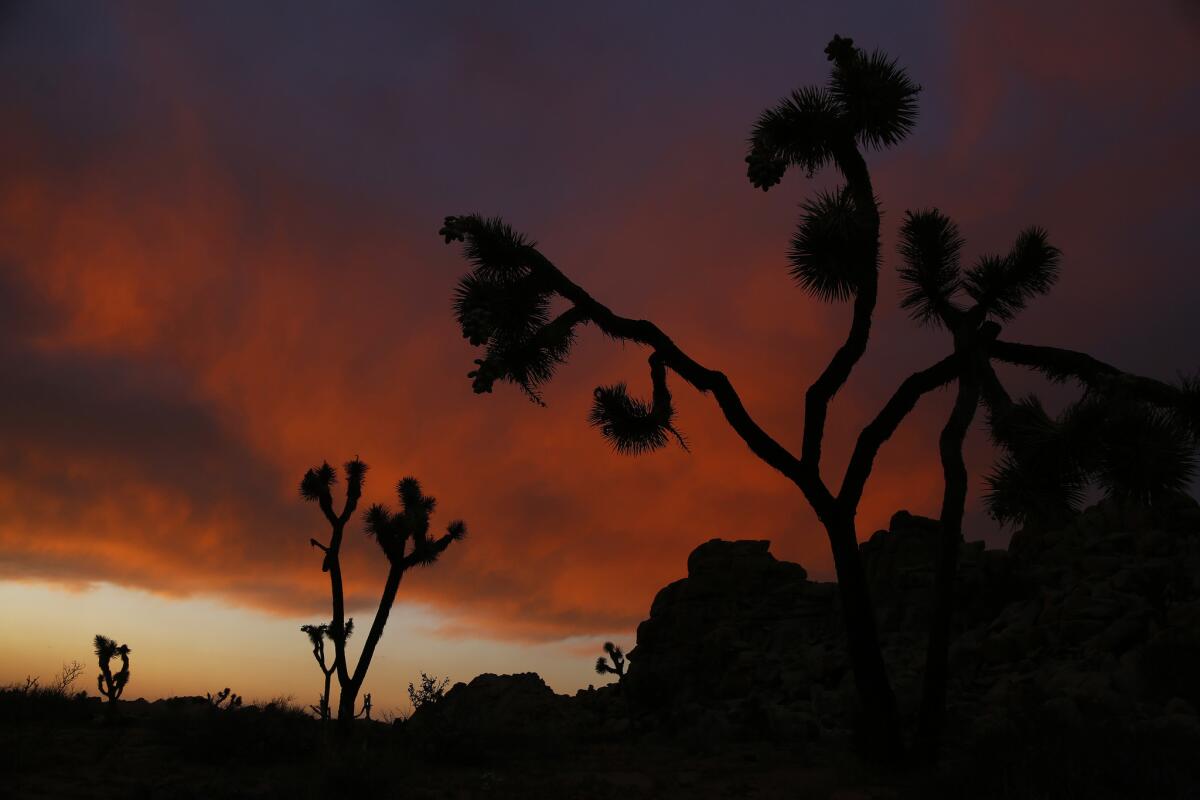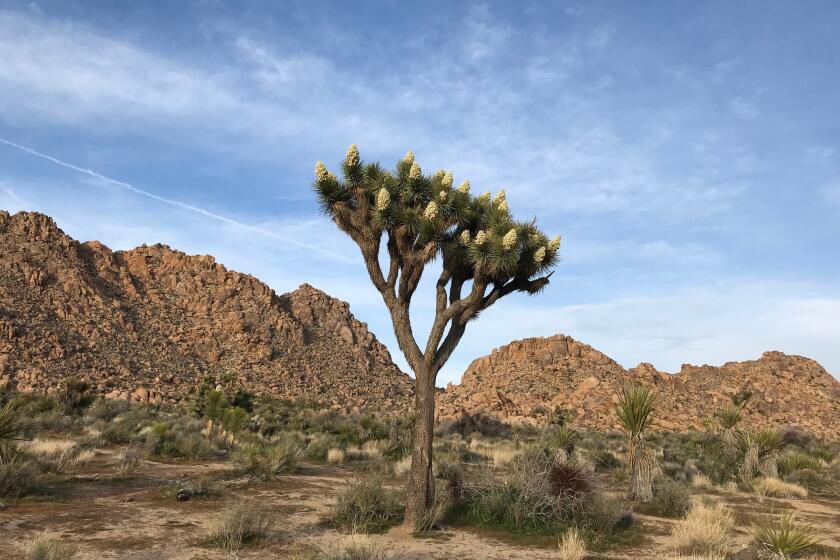California’s plan to save Joshua trees is good for more than just U2 fans

- Share via
The California Department of Fish and Wildlife on Monday moved the western Joshua tree a step closer to crucial protections as climate change and encroaching development threaten those lonely Mojave Desert sentinels with extinction.
The department’s staff determined that there is “sufficient scientific information available” to indicate that Joshua trees qualify for protections, the first step in a review process that could last up to a year — but that also would extend temporary protections if the Fish and Game Commission votes to do so in June.
The trees, whose stark silhouettes define the desert for some (and graced the album jacket of “The Joshua Tree,” the rock group U2’s bestselling album), exist at elevations between 2,000 and 6,000 feet and rely on yucca moths to reproduce. But as temperatures rise the inhabitable space for the trees shrinks, and it all but disappears for the moths.
Monday’s decision precedes a meeting planned for Santa Ana in June (let’s hope life is somewhat back to normal by then) to accept the recommendation for permanent protections under California’s Endangered Species Act, compelling state and local agencies to manage threats and devise plans to insulate the trees from degradation, including development.
The vote to do so, though, wouldn’t happen until the subsequent commission meeting in June.
Scientists have repeatedly warned that hotter, drier conditions being fueled by climate change are causing mature western Joshua trees to die off, and fewer younger ones are able to grow to replace the dwindling population.
About 40% of the Joshua trees’ existing habitat is on private land, where the development of housing tracts, shopping centers, roads, renewable energy facilities and other power-related projects threaten the trees’ survival. A protected status wouldn’t stop development completely, but it means that projects must be weighed against whether they might damage the trees or their habitat.
Many cities and counties already have laws barring removal of Joshua trees, which is also forbidden in the Joshua Tree National Park and the Mojave National Preserve. The broader designation would help protect the trees elsewhere.
Of course, none of these measures will top the bigger threat — climate change — but they could give the trees some help surviving as the world works on limiting global warming.
The state acted on a petition submitted by the Center for Biological Diversity after the Trump administration bizarrely determined that Joshua trees — which may not survive the century — were OK for now.
As the COVID-19 pandemic continues to roar across the country, it’s worth noting that at least one in six healthcare professionals are immigrants.
The center argued that the Joshua trees aren’t in imminent threat of extinction, but they face a deeply challenging future and are “likely to become endangered in the foreseeable future” without special protection and better management.
The Times editorial board agreed in October and backed placing protections on the trees, writing:
“Imagine Joshua Tree National Park with no Joshua trees.
“That is no mere threat. Scientists have repeatedly warned that hotter, drier conditions being fueled by climate change are causing mature western Joshua trees to die off, while fewer younger ones are able to grow to replace the dwindling population. If we don’t act soon, one of California’s iconic and unique trees could be nearly wiped out by the end of the century.”
More to Read
A cure for the common opinion
Get thought-provoking perspectives with our weekly newsletter.
You may occasionally receive promotional content from the Los Angeles Times.











